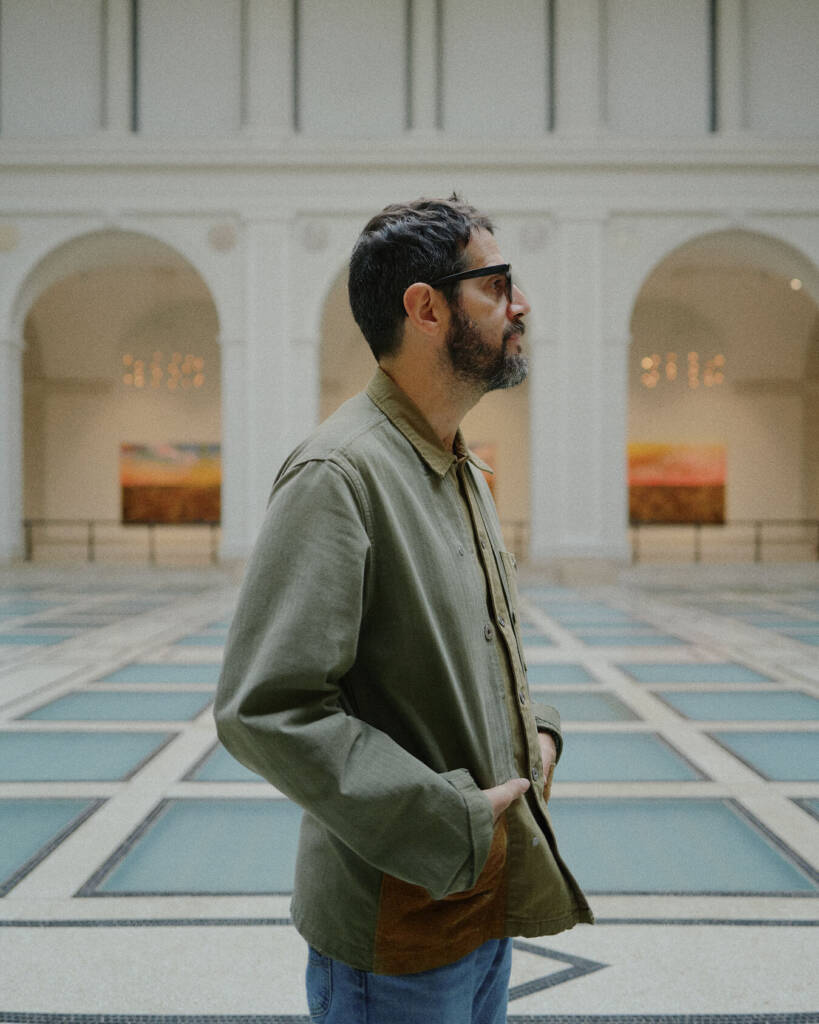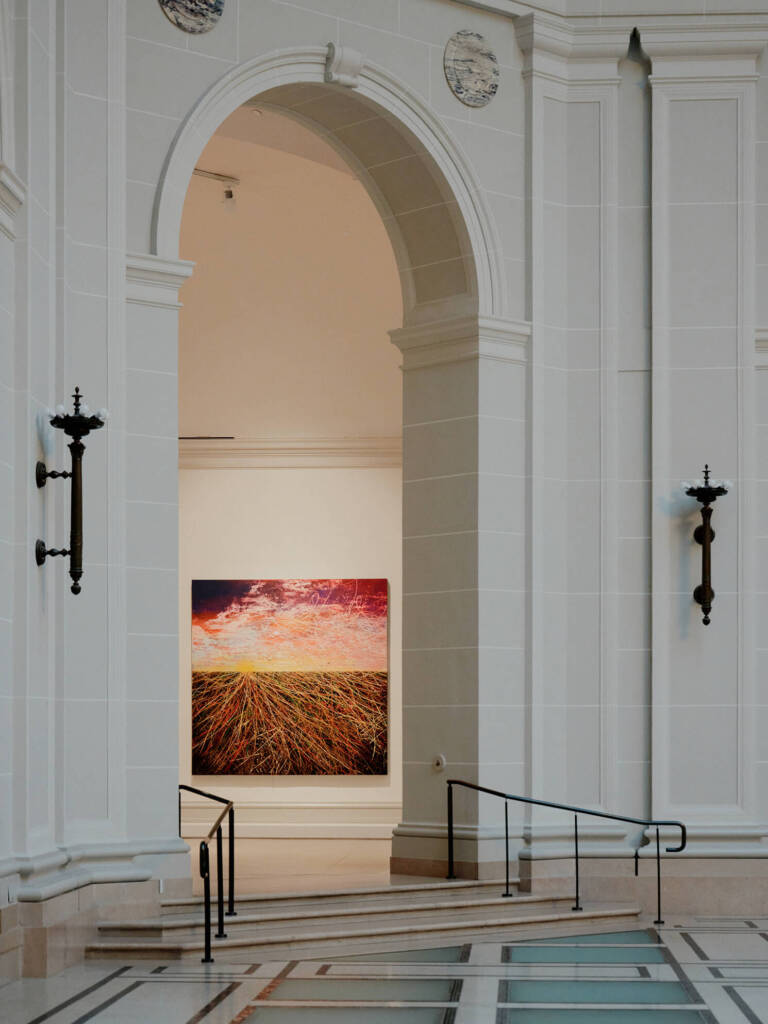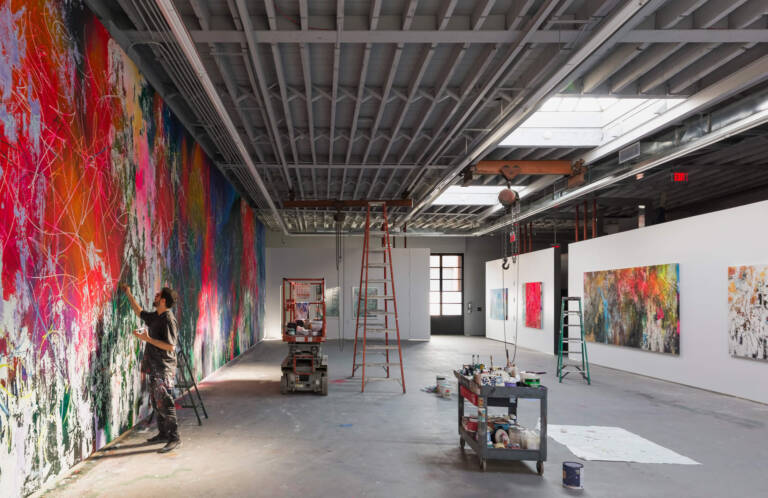

In a world where art transcends traditional boundaries, José Parlá stands as a fearless urban visionary. Born from a rich cultural mosaic and fueled by the pulse of city streets, Parlá transforms concrete and canvas into living narratives that challenge our perception of history and modernity. His monumental murals – like the tribute at One World Trade Center – and dynamic installations capture the raw resilience of communities and the layered echoes of urban landscapes.
hube: Your mural ONE: Union of the Senses at One World Trade Center is a monumental work in a place deeply tied to collective memory and resilience. What does it mean to create something of such scale in a location that carries so much historical and emotional weight?
José Parlá: ONE: Union of the Senses is both a painting and a movie – a twin expression meant to pay homage to the Twin Towers of the World Trade Center in New York, lost on September 11th. I was chosen to create this large-scale mural, and it needed to be significant for New Yorkers and visitors worldwide. The work carries a message of resilience, unity, peace, and justice. Its composition is built from words – a universal language rendered in a calligraphic form that each viewer can interpret in their language. It invites you to step into a vast field of colour, texture, and language and to reflect on the history of that day, the emotional impact it had globally, and the hope for a future built on respect for life and unity.
h: In Homecoming at the Pérez Art Museum Miami, your works seem to carry both the weight of history and the energy of renewal. How do you navigate the balance between honouring the past and embracing change in your art?
JP: I like to begin with Maya Angelou’s reminder – you cannot move forward until you understand where you have been. Homecoming is very appropriate on many levels. Locally, it pays homage to the history of Miami and the Caribbean region, acknowledging the indigenous peoples who first inhabited these lands and the diverse cultural narratives that shaped the area. On a personal level, having been born in Miami to Cuban parents and raised in Puerto Rico, I’ve always been aware of the political climate in the Caribbean and beyond. My work weaves together collage, texture, and a deeply embedded language that honours both global and local histories. I believe in looking to the past for lessons while embracing the promise of the future.
h: Are these themes of history, memory, and renewal consistent across your body of work – even in your independent projects?
JP: Absolutely. These themes have run through my work for the past 25 years. In paintings from the early 2000s, you see titles and concepts that explore psychogeography and human mark-making – ideas rooted in prehistoric cave paintings in Altamira and Lascaux, in the writings on the walls of Pompeii, and in Ancient Roman and Asian calligraphy. Cities layered in history from places like Berlin, London, Tokyo, and Hiroshima remind us that reconstruction follows conflict and transformation. Art, as I see it, reflects the state of our world, from past wars to today’s complex, often overwhelming, flow of information. Through art, we express a vision for the future with resilience and democratic storytelling.

